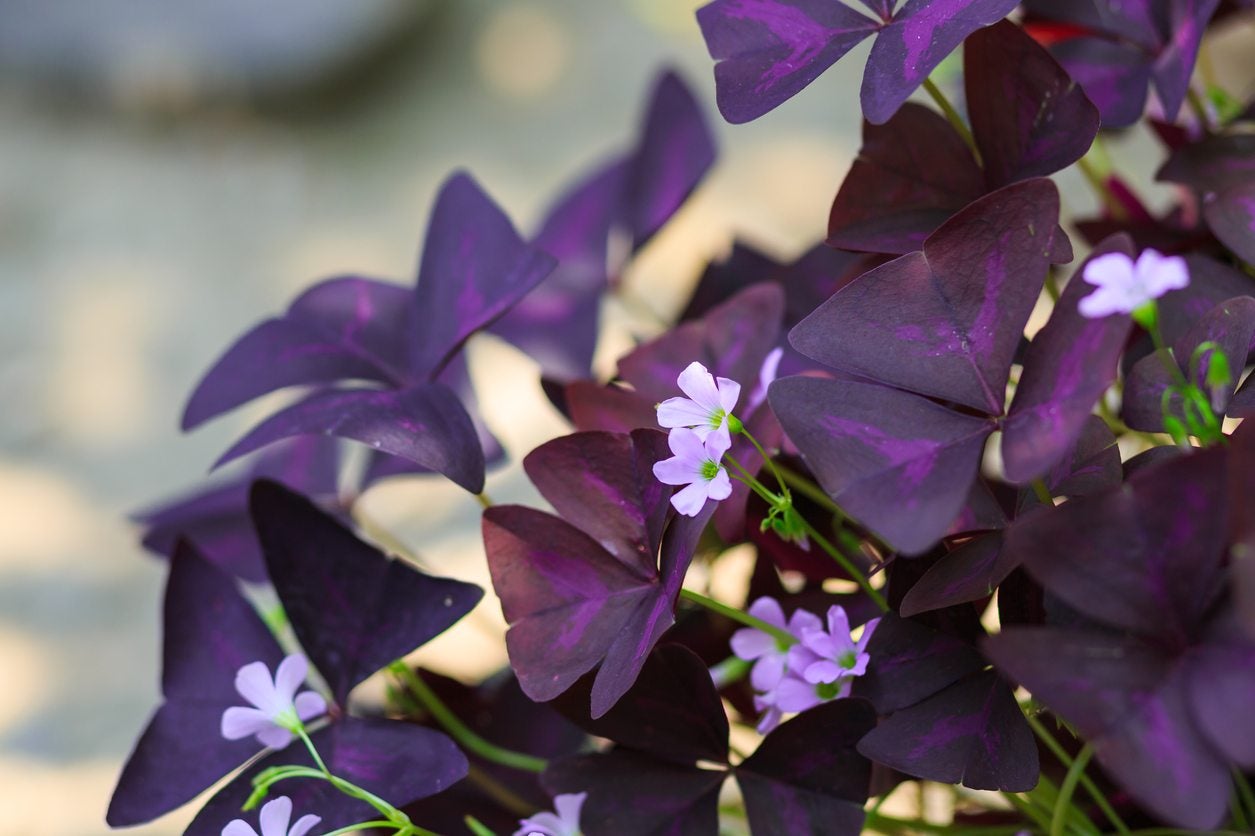Caring For Oxalis Plants Outside: How To Grow Oxalis In The Garden
Enjoy an Oxalis, also known as shamrock or sorrel, for St. Patrick's Day or any time. It grows happily with minimal attention - a pretty addition to any garden.


Oxalis, also known as shamrock or sorrel, is a popular indoor plant around the St. Patrick’s Day holiday. This diminutive, little plant is also suitable for growing outdoors with minimal attention, although it may need a little help getting through chilly winters.
Read on to learn about growing oxalis outdoors.
How to Grow Oxalis in the Garden
Plant oxalis where the soil is moist and well-drained, but never soggy. Slightly acidic soil is best. Additionally, improve soil quality and drainage by digging in a little well-rotted manure or compost before planting.
Oxalis needs a few hours of sunlight every day, but plant it in afternoon shade if you live in a hot climate. Oxalis leaves may wilt during hot afternoons, but it will usually bounce back when the temperature drops in the evening.
Keep in mind that species with darker leaves tolerate more sunlight.
Oxalis Outdoor Care
Oxalis plant care in gardens isn’t too demanding but may include offering it some winter protection in cooler climates.
Provide enough water to keep the soil evenly moist. Beware of overwatering, however, as the little bulbs will rot in soggy, waterlogged soil. On the other hand, be careful the soil doesn’t get completely dry, especially during hot weather.
Sign up for the Gardening Know How newsletter today and receive a free copy of our e-book "How to Grow Delicious Tomatoes".
Feed oxalis regularly during the growing season using a liquid fertilizer mixed at half strength.
If you live in a warmer climate, don’t be surprised when your oxalis plant turns brown and drops its leaves in late summer. This means the plant is going into a period of dormancy. Withhold water during this time and resume watering when new shoots appear in spring.
Take steps to protect your oxalis plant if you live in a chilly climate. Hardiness varies depending on the species, and some, including purple shamrock (Oxalis triangularis), tolerate winters in USDA plant hardiness zone 6. However, most are frost-tender and won’t survive frosty weather.
One option when caring for oxalis plants in winter is to pot them up before freezing temperatures arrive in fall, then bring them indoors to a sunny location. You can also put the plants in a pot and allow them to go completely dormant, which means no watering. Store in a cool, unheated (but non-freezing) room. Move the oxalis plants to a well-lit location in spring, resume watering, and then move back outdoors when all danger of frost has passed.
Alternatively, dig the bulbs and store them until spring. Gently brush off the excess dirt and place the bulbs loosely into a cardboard box. Bring them into the house until the foliage dries up, which takes about a week. Move the bulbs into a container filled with sphagnum moss, peat moss, or sawdust and store them where it’s dark and cool but not freezing.

A Credentialed Garden Writer, Mary H. Dyer was with Gardening Know How in the very beginning, publishing articles as early as 2007.